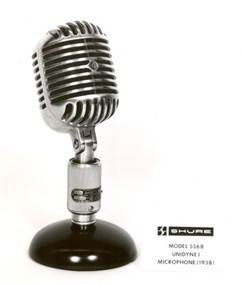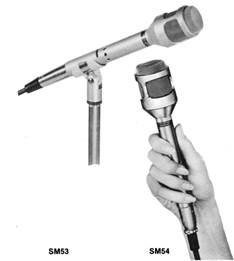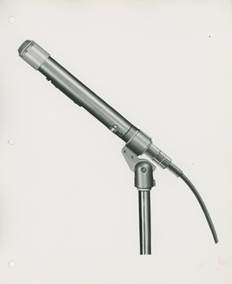Elvis Presley's career grew to such heights that he eventually was a man known by one name. However, it seems he was a man of many microphones.
The new Baz Luhrmann film, Elvis, brings the story of the iconic rock star to the big screen. Warner Brothers was committed to ensuring as much historical accuracy as possible, and asked Shure to consult on the microphone models Elvis used. Shure was provided photos of Elvis performing, then identified the vintage mics, and offered suggestions on alternative models when appropriate. For decades, Shure has assisted film production companies in identifying and locating historically accurate microphones.
[Shure is the Wireless Choice at the 2022 CMT Awards]
While there are a variety used in the movie, here are just a sampling of the different types of Shure microphones Elvis used throughout his career.
One for the Money: The Shure Unidyne I Model 556

This variation of the Unidyne I is one of the more recognizable microphones that Elvis used in the prime of his career. According to the 1947 Shure Product Data Sheet, “The Model 556 is a Super-Cardioid type unidirectional moving-coil dynamic microphone providing wide-range high-quality reproduction of sound.
The true unidirectional characteristic of the ’Unidyne‘, obtained by the ’Uniphase‘ principle provides highly satisfactory operation under adverse acoustic conditions where a conventional microphone would be practically useless.
The microphone has a New Acousto-Mechanical circuit containing a moving-coil element, which operating in conjunction with a high flux magnet, provides high efficiency and smooth peak-free response from 40-15,000 cycles. The rear response is down approximately 15 decibels (dB) due to the ’uniphase‘ unidirectional acoustic network.
[Shure Axient Digital Wireless Technology Powers Billboard Music Awards]
The new moving-coil unit comes with a double windscreen to ensure quiet outdoor operation. As a precaution against mechanical vibration pickup, the unit is spring-suspended inside the microphone case, which is, in turn, floated in live rubber in the stand connector.
The case is modern in design, with attractive streamlining and grille treatment. The swivel allows the microphone to be aimed at the source of sound for best pickup.”
Shure’s iconic Unidyne microphone was featured on the special edition “Elvis” stamps issued in 1993.
Two for the Show: Shure SM53 and SM54

The SM53 and SM54 were internally the same, with the SM54 having a larger grille.
According to the 1970 Product Data Sheet, “the reliable performance, outstanding features, and handsome appearance of the SM53 and SM54 make them extremely versatile and ideally suited for many demanding applications in television, radio, recording, motion pictures, and sound reinforcement. The performance and appearance of the two models are very similar; however, the SM54 is specifically designed for use in very difficult close-talking and hand-held situations because of its immunity to "pop" and breath blasts.” Elvis used these microphones in the 1970s, primarily because they had little bass build-up from the proximity effect. The deep voice of Elvis did not require “more bass.”
[Captain's Log: FlexGlass Projection Screen Powers Starship Console in ‘Star Trek: Picard’]
Go Cat Go: The Shure Model 525 omnidirectional moving coil dynamic

The 1954 Product Data Sheet describes this microphone as “a slender, moving-coil dynamic microphone, custom-built to provide high-fidelity reproduction of voice and music as well as features an omnidirectional pattern.
The microphone is versatile and reliable for both indoor and outdoor use. The extended, smooth frequency response and the attending faithful reproduction are largely due to a newly designed diaphragm attached to a sensitive coil suspended in a magnetic structure.
The use of high-efficiency magnetic materials and specially designed magnetic circuits has made it possible to develop this small microphone and still achieve maximum operating efficiency. The microphone is ruggedly built to withstand hard usage and is unaffected by temperature and humidity variations.”
